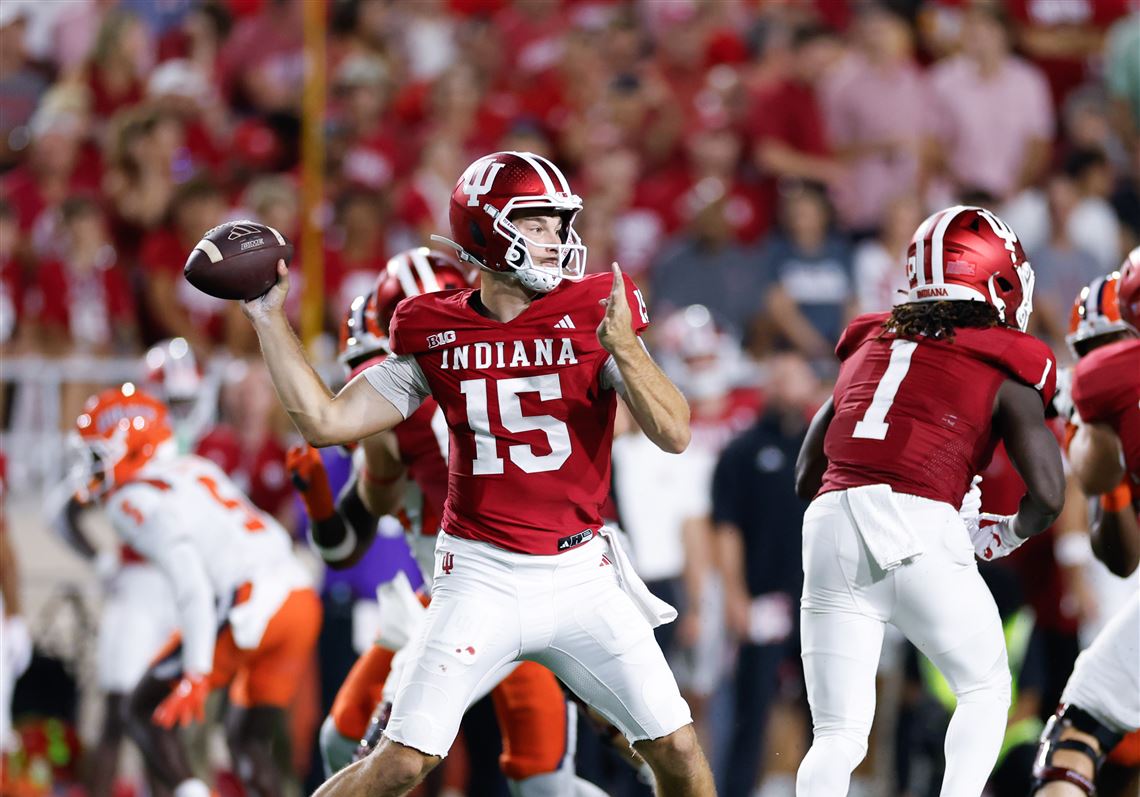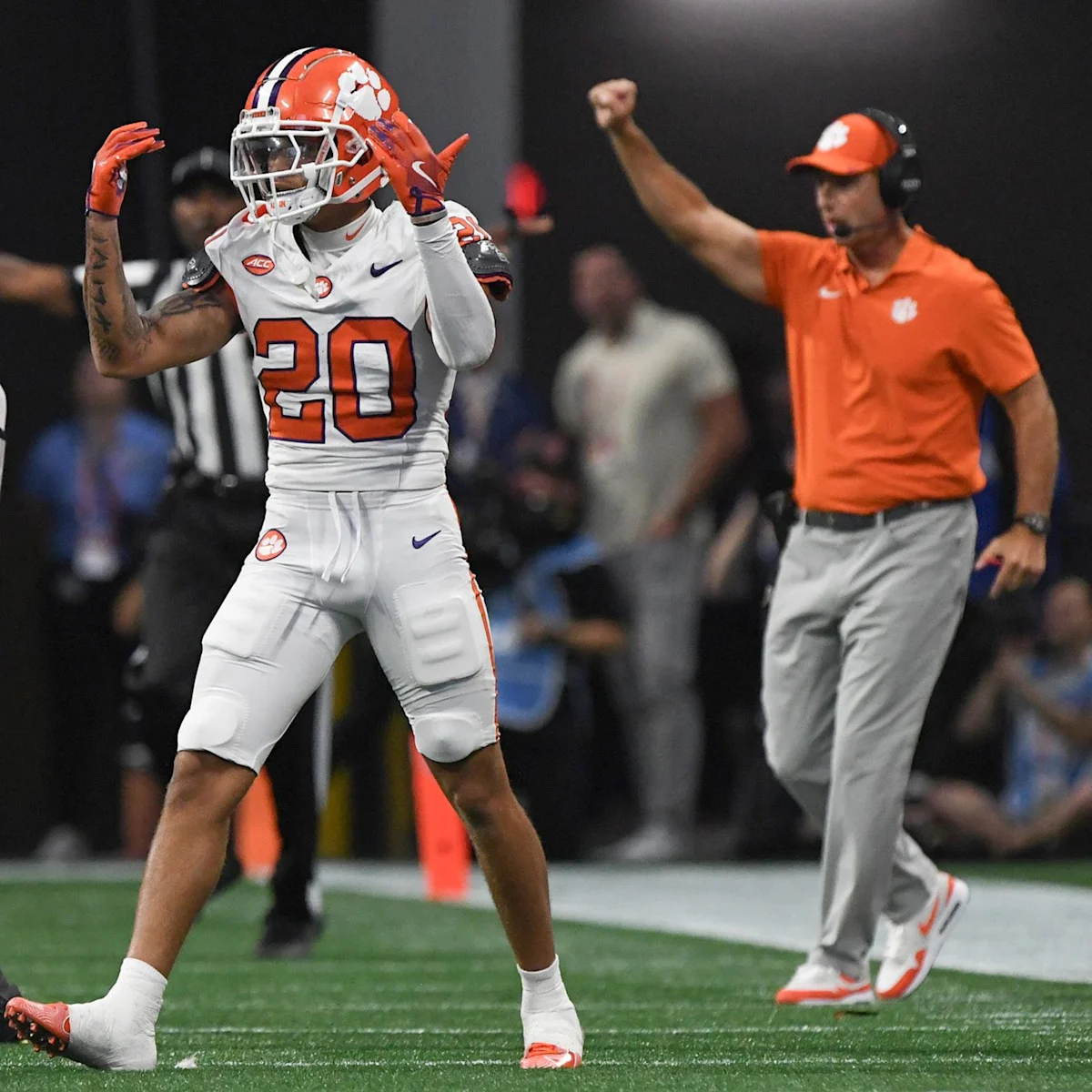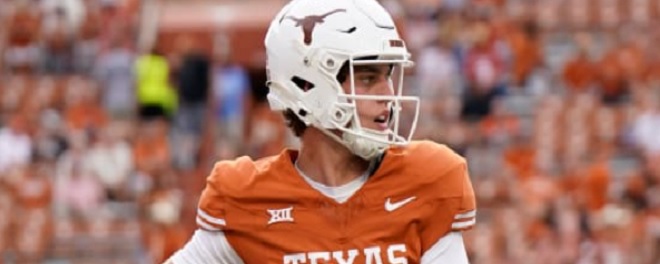By Charlie Campbell.
Send Charlie an e-mail here: [email protected]
Follow Charlie on Twitter @draftcampbell for updates.
This page was last updated April 1, 2015. Follow me @walterfootball for updates.
Position Review: Centers
Center Class
Early-round talent: A
Mid-round: B
Late-round: C
Overall grade: B
2015 prospects vs 2014
Cameron Erving > Weston Richburg
Hroniss Grasu > Marcus Martin
Reese Dismukes < Travis Swanson
B.J. Finney < Bryan Stork
Andy Gallik = Russell Bodine
Max Garcia < Corey Linsley
Jake Smith < Wesley Johnson
David Andrews < Luke Bowanko
This year’s draft class features a stronger group of centers at the top, but last year’s group had better depth. All of the players above from the 2014 group were drafted. None will go as high as Erving should this year, but not all of these centers for 2015 are locks to be selected. The final three from the 2015 list are in danger of going undrafted.
If you were to mix the classes, Erving would be the top prospect. Grasu would go behind Richburg but ahead of Martin. Dismukes isn’t as good of a prospect as Swanson. Finney would go behind Stork but ahead of Bodine. The trio at the end is in the mix on Day 3 of the 2015 NFL Draft, but any of its members could fall undrafted.
Safest Pick: Cameron Erving, Florida State

I think Erving is a very safe pick to become a good center in the NFL. The 6-foot-5, 313-pounder is bigger than the average center while also being quicker and more athletic than the norm. Erving was an impact player in the middle of the Seminoles’ line down the stretch during the 2014 season. If he stays healthy, I think he stands a very good chance of becoming a Pro Bowl center.
Previous Picks:
2014: Weston Richburg
2013: Barrett Jones
Biggest Bust Potential: Hroniss Grasu, Oregon

This was a tough choice, but I went with Grasu in part because late-round picks aren’t true busts. Grasu could go in the second or third round, and that would make him a projected starter. I honestly don’t think Grasu will go bust, but the potential could be there as he is a little undersized at 6-foot-3, 297 pounds, and I could see him having some issues with powerful defensive tackles. I also wonder about his durability in the NFL.
I’m definitely happy to be accountable and say that I completely blew this projection in 2013. This is what I wrote two years ago about Frederick having bust potential, “This only is in regard to center, since Frederick should, at worst, be a solid guard in the NFL. The 6-foot-4, 312-pound Badger is a misfit for center. He is not as mobile as most teams want their centers to be as a result … can struggle with speed-rushers, and if he were a center in the NFL, he would see a lot of speed tackles being matched up against him. Frederick doesn’t fit a zone-blocking system either. If he is forced into center, there is the capacity for him to go bust.”
So, I was clearly wrong in that evaluation because Frederick has been a rock-solid center who does everything well. At least, I prefaced it by saying at worst he would be a solid guard.
Previous Picks:
2014: Marcus Martin
2013: Travis Fredrick
Center Rankings by Attributes
Pass Protection:
NFL prototype: Max Unger, Saints
- Cameron Erving
- Hroniss Grasu
- Reese Dismukes
- B.J. Finney
- Andy Gallik
- Max Garcia
- Jake Smith
- David Andrews
Recap: The NFL is all about the passing offense, so centers must be be an asset at protecting the quarterback and helping to keep a clean pocket. They need to be able to stop interior blitzes, bull rushes from heavy nose tackles, speed rushes from three-techniques and double-teams effectively. Fortunately for teams needing a center, this year’s class has some good pass-blockers.
Erving is definitely the best of the bunch. He is quick, agile and has great balance. He can move with speed rushers and has the technique to stop heavy bull rushers. In college, Erving spent the majority of his time starting at left tackle, so he is battle tested. On the inside, Erving has the size to single-block defensive tackles to go with the speed and athleticism to take on fast rushers. Erving should be a real asset as a pass-protector in the NFL.
Grasu was a good protector for Marcus Mariota and got better over the past three seasons. There were a few times where Grasu struggled with Stanford’s defensive line and UCLA, but overall, he was net positive. Grasu is smart to set the line well and pick up interior blitzes. He could use more weight and strength to handle the heavy nose tackles whho he’ll battle against in the NFL, especially from 3-4 defenses.
Dismukes, Finney, and Gallik all blocked in ground-oriented offenses, but they did well in pass protection when called upon. They were equipped to handle speed rushers especially. All three are smart technicians.
Garcia was bad in pass protection as a junior, but better as a senior. Smith and Andrews have room for improvement in their pass blocking. They should develop on the bench before taking on NFL defensive linemen.
Run Blocking:
NFL prototype: John Sullivan, Vikings
- Cameron Erving
- Reese Dismukes
- B.J. Finney
- Andy Gallik
- Hroniss Grasu
- David Andrews
- Jake Smith
- Max Garcia
Recap: The Seminoles had a lot of success running behind Erving after moving him to center mid-way through 2014. He can push defensive linemen around and open holes on the ground. Erving also explodes out of the line and fires to the second level to get on linebackers before they expect him. He has the size, strength and athleticism to be an impact run-blocker in the NFL.
Dismukes isn’t as big as some of these other centers, but he is a tough run-blocker as one would expect for an offensive lineman from Auburn. Dismukes opened a lot of holes for Cameron Artis-Payne and Tre Mason the past two years. Dismukes was more impressive as a junior than he was as a senior, but the Tigers had better talent around him that season.
Finney was an excellent run-blocker for Kansas State last season. He has enough strength to move linemen and is surprisingly quick and agile to get to blocks on defenders at the second level. Finney really improved as a senior.
Gallik has strength to him and can pop some defenders. Boston College ran well behind him during the past two years.
Grasu doesn’t pack as much punch as the players above, but he gets the job done. The Ducks obviously ran the ball extremely well during his time in Eugene. However, against bigger more physical lines, Grasu didn’t achieve a whole ton of movement. He could fit really well in a zone-blocking scheme.
Andrews and Smith were solid run-blockers in college, and their run blocking is ahead of their pass protection. Garcia needs to add power for the NFL. He struggles to move defenders.
Speed:
NFL prototype: Maurkice Pouncey, Steelers
- Cameron Erving
- Hroniss Grasu
- Reese Dismukes
- B.J. Finney
- Max Garcia
- Jake Smith
- David Andrews
- Andy Gallik
Recap: Erving is the fastest center in the 2015 NFL Draft. He moves really well at the point of attack. Grasu and Dismukes are both very quick off the snap and are able to pull well. All three of those centers are fast to hit blocks on the second level.
Finney and Garcia have underrated quickness. They both move well for their size. Smith isn’t slow, but he doesn’t really have speed. Andrews and Gallik aren’t very fast.
Strength:
NFL prototype: Nick Mangold, Jets
- Cameron Erving
- Andy Gallik
- B.J. Finney
- Jake Smith
- Hroniss Grasu
- Reese Dismukes
- David Andrews
- Max Garcia
Recap: This was an easy choice. Erving is clearly the strongest center of the group as he can can push linemen around. Erving can make them look like defenders are on roller skates at times. Gallik and Finney pack a nice punch when they hit a block on the second level. Both have more power than the remaining centers. Finney comes in third because he is strong for his size and is very well-rounded. While Finney isn’t overly powerful, he’s developed some strength.
Grasu and Dismukes need to get stronger for the NFL. Neither of them has the power to move pro defensive tackles. However, Grasu and Dismukes are well-rounded blockers otherwise, so if they add weight in a NFL strength and conditioning program, they could be strong blockers at the point of attack.
Andrews was an effective run-blocker for Todd Gurley the past few years, but the big question mark and knock on Andrews from teams is they have concerns about whether he has enough strength for the next level. Garcia is over 300 pounds, but he doesn’t play with power to move linemen.
Zone Blocking:
NFL prototype: Mike Pouncey, Dolphins
- Cameron Erving
- Hroniss Grasu
- Reese Dismukes
- B.J. Finney
- David Andrews
- Max Garcia
- Andy Gallik
- Jake Smith
Recap: The athletic Erving is the best fit as a zone-blocking center in the NFL. He is agile, quick and athletic, which makes him a perfect fit to be part of the moving wall of a zone-blocking scheme.
Grasu and Dismukes both were effective when their teams ran some zone schemes in college. They probably fit a zone scheme better as they are mobile, athletic and smart. Their college systems have them prepared to play zone.
Finney, Andrews and Garcia could all execute in a zone scheme. They’re probably better fits for zone than they would be for man, especially the latter two. Gallik and Smith look like better fits in man.
Power-Man Blocker:
NFL prototype: Maurkice Pouncey, Steelers
- Cameron Erving
- B.J. Finney
- Andy Gallik
- Jake Smith
- Hroniss Grasu
- Reese Dismukes
- Max Garcia
- David Andrews
Recap: Erving and Finney are both great fits for a man-blocking scheme. Erving can move defenders at the point of attack with power and strength. He should be able to step into a man scheme and contribute immediately. Both Finney and Gallik are strong with good size. Teams that run power schemes should like them.
Grasu and Dismukes would be able to play in a power-man scheme, but as stated above, it would be good if they muscle – 10 added pounds – to have strength at the point of attack.
Garcia and Andrews could be drafted by man teams, but should add some power. Both would be developmental projects and backups for a time before being ready to compete.
Versatility:
NFL prototype: Mike Pouncey, Dolphins
- Cameron Erving
- Max Garcia
- B.J. Finney
- Andy Gallik
- Hroniss Grasu
- Reese Dismukes
- Jake Smith
- David Andrews
Recap: NFL offensive line coaches like their interior linemen to have the ability to play guard or center. Young players who are fighting to make the team as backups help themselves by having flexibility on the inside. On game days, teams need interior linemen who can play guard or center.
Erving is the most versatile offensive lineman in the 2015 NFL Draft, and the other center candidates are not even close. Not only was he a quality left tackle in college, Erving could start at guard or right tackle in the NFL. Center looks like his best position, but on game days, he could be an offensive lineman who could play any of the five spots if the need arose. His versatility is tremendous.
Garcia is a clear second. He started at guard and left tackle as a junior. In the NFL, Garcia could compete at guard, but tackle should only be an option in a dire emergency.
Finney and Gallik could play some guard as well. If either was to move there, he would need to add some weight.
I’m not that confident that Grasu, Dismukes, Smith or Andrews has ability to move to guard. I don’t think any of them could handle tackles one on one. Andrews (6-2, 292) definitely can’t move to guard. He’s too undersized.
Intelligence:
NFL prototype: Nick Mangold, Jets
- Hroniss Grasu
- Cameron Erving
- Reese Dismukes
- B.J. Finney
- Andy Gallik
- Jake Smith
- David Andrews
- Max Garcia
Recap: The intelligence of Grasu is well-known. He has the reputation a being a very smart blocker.
None of the rest of the centers look like they are lacking intelligence. Erving and Dismukes look like they are very adept at making the proper line calls. Both should be able to make the mental transition quickly to the NFL.
Finney seemed to do a good job of setting the protections and worked well with his quarterback. Kansas State players are typically smart and technically sound.
NFL Picks - Jan. 15
2026 NFL Mock Draft - Jan. 14
NFL Power Rankings - Jan. 5
Fantasy Football Rankings - Sept. 1



